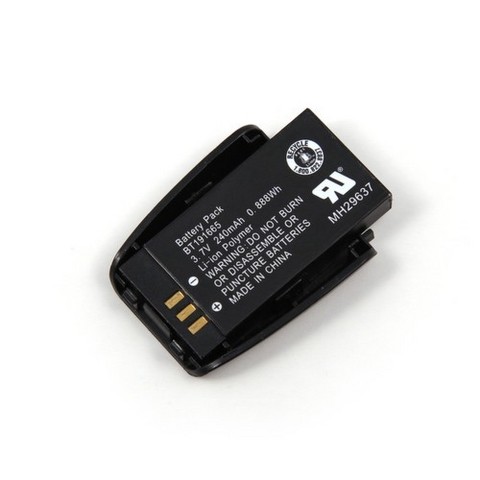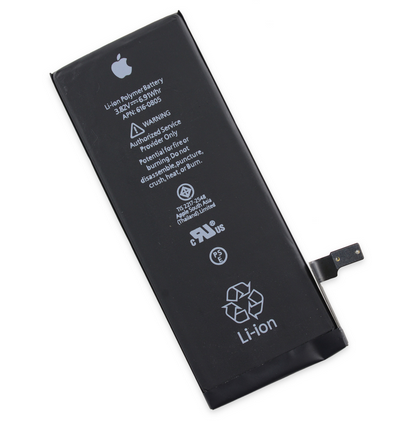Battery Navigation
Latest topics
Search
Battery Statics
Ads
Batteries Wear out with Nan particles Ten Times Slower
Page 1 of 1
 Batteries Wear out with Nan particles Ten Times Slower
Batteries Wear out with Nan particles Ten Times Slower
One of the biggest problems with renewable energy, including solar panels and wind turbines, is the storage of electricity. For it is not necessarily when the sun shines the most - typically during the day - and therefore the greatest amount of electricity is generated that has the greatest need. Quite the night when all the lights and street lights are on and the heaters are switched on.
If you know this store temporary excess in giant batteries, unless you master the versatility of this storage, particularly related to the wear of batteries, inevitable. A major challenge now is to create efficient storage systems, offering high capacity and supporting a large number of charge-discharge cycles.
Researchers at Stanford University are likely to take a step in that direction. They have developed a battery that could suffer up to 40,000 cycles of full charges and discharges without losing more than 17% of its capacity, or where a standard lithium-ion battery can be considered as waste after 400 cycles. With modest charges and discharges, researchers get a loss of load capacity of only 1%.
For this, the battery used for one of its electrodes (the cathode is to say the pole "+") to nanoparticles. Experiments had been conducted, but as explained Frédéric Le Cras, CEA-Liten (Laboratory of Innovation for New Energy Technologies and Nanomaterials), "their use in lithium-ion current is far from Systematic. Intervening when it solves some limitations of the materials "massive" or to better exploit some of their properties. "
In the case studied, these nanoparticles based on copper (the copper hexacyanoferrate). They form a lattice open enough that the ions can move about easily, and therefore out of the electrode and enter without causing wear. To maximize the effect, the team replaced the lithium ions by potassium ions, whose size corresponds better to the pores of the crystal lattice. Result, the battery has a lifespan tenfold ("up to thirty years on the grid" as one of the researchers responsible for the experience, quoted by Nature Communications), and a charging time optimized .
Improve the flow of ions at the electrodes is a good way to increase the efficiency of the batteries. Recently, a team of school McCormick, United States, presented an anode covered with graphene sheets between which are interspersed clumps of silicon atoms, which increases the amount of stored ions and their outstanding within the electrode.
Can be seen, progress in battery going well but we are here in the laboratory. The device of Stanford, for example, has a small drawback, namely the loss of one of the main qualities of the li-ion battery was the density. That is, the ability to store much energy in a smaller size. This is confirmed by Frédéric Le Cras, "The use of these nanoscale materials is limited in the case of lithium battery, as it quickly translates into a loss of energy density and volume: these materials are less dense and require implementation of more compounds "peripheral" (binder polymer, carbon, etc.). for their integration into the accumulator. "
Inexpensive to produce
But it is not very serious because not talking battery for portable devices but for the general power grid, which has a large storage capacity.
Above all, this disadvantage is offset by the lower cost of production of these batteries to nanoparticles compared to lithium-ion batteries. Through the replacement of lithium by potassium first, but also by the use of an electrolyte (ion conductive substance to the electrodes) water-based rather than organic solvent type carbonates.
It is a size limitation for developing this new battery technology for the Stanford team has somehow solved half the problem. The cathode copper nanoparticles present an electric potential such that it is not compatible with current anodes, all providing only a weak voltage, that is to say, too small potential difference. This leaves researchers to find the right material for the anode ... as McCormick's team must find the right technique for the cathode.
Anyway, even if currently no real full battery was constructed according to this model, the promise is enormous and could, among other things, facilitate the deployment of structures to produce and store renewable energy. It remains to find the path of industrialization, which, according to the researchers involved, would already be drawn.
If you know this store temporary excess in giant batteries, unless you master the versatility of this storage, particularly related to the wear of batteries, inevitable. A major challenge now is to create efficient storage systems, offering high capacity and supporting a large number of charge-discharge cycles.
Researchers at Stanford University are likely to take a step in that direction. They have developed a battery that could suffer up to 40,000 cycles of full charges and discharges without losing more than 17% of its capacity, or where a standard lithium-ion battery can be considered as waste after 400 cycles. With modest charges and discharges, researchers get a loss of load capacity of only 1%.
For this, the battery used for one of its electrodes (the cathode is to say the pole "+") to nanoparticles. Experiments had been conducted, but as explained Frédéric Le Cras, CEA-Liten (Laboratory of Innovation for New Energy Technologies and Nanomaterials), "their use in lithium-ion current is far from Systematic. Intervening when it solves some limitations of the materials "massive" or to better exploit some of their properties. "
In the case studied, these nanoparticles based on copper (the copper hexacyanoferrate). They form a lattice open enough that the ions can move about easily, and therefore out of the electrode and enter without causing wear. To maximize the effect, the team replaced the lithium ions by potassium ions, whose size corresponds better to the pores of the crystal lattice. Result, the battery has a lifespan tenfold ("up to thirty years on the grid" as one of the researchers responsible for the experience, quoted by Nature Communications), and a charging time optimized .
Improve the flow of ions at the electrodes is a good way to increase the efficiency of the batteries. Recently, a team of school McCormick, United States, presented an anode covered with graphene sheets between which are interspersed clumps of silicon atoms, which increases the amount of stored ions and their outstanding within the electrode.
Can be seen, progress in battery going well but we are here in the laboratory. The device of Stanford, for example, has a small drawback, namely the loss of one of the main qualities of the li-ion battery was the density. That is, the ability to store much energy in a smaller size. This is confirmed by Frédéric Le Cras, "The use of these nanoscale materials is limited in the case of lithium battery, as it quickly translates into a loss of energy density and volume: these materials are less dense and require implementation of more compounds "peripheral" (binder polymer, carbon, etc.). for their integration into the accumulator. "
Inexpensive to produce
But it is not very serious because not talking battery for portable devices but for the general power grid, which has a large storage capacity.
Above all, this disadvantage is offset by the lower cost of production of these batteries to nanoparticles compared to lithium-ion batteries. Through the replacement of lithium by potassium first, but also by the use of an electrolyte (ion conductive substance to the electrodes) water-based rather than organic solvent type carbonates.
It is a size limitation for developing this new battery technology for the Stanford team has somehow solved half the problem. The cathode copper nanoparticles present an electric potential such that it is not compatible with current anodes, all providing only a weak voltage, that is to say, too small potential difference. This leaves researchers to find the right material for the anode ... as McCormick's team must find the right technique for the cathode.
Anyway, even if currently no real full battery was constructed according to this model, the promise is enormous and could, among other things, facilitate the deployment of structures to produce and store renewable energy. It remains to find the path of industrialization, which, according to the researchers involved, would already be drawn.
largebattery- Posts : 12
Points : 34
Reputation : 0
Join date : 2011-11-29
 Similar topics
Similar topics» Does the Lead Acid Battery Compete in Modern Times?
» Why Should We Not Throw Batteries in the Trash?
» HTC Flyer battery BG41200
» New HP WQ001AA batteries
» HP WQ001AA batteries
» Why Should We Not Throw Batteries in the Trash?
» HTC Flyer battery BG41200
» New HP WQ001AA batteries
» HP WQ001AA batteries
Page 1 of 1
Permissions in this forum:
You cannot reply to topics in this forum













» NIO Phone 2 Smartphone Battery NBET02
» Mercedes Becker Map Pilot Battery HJS100
» Braun Silk-épil 9 Flex Type 5380 Epilator Battery
» Samsung Galaxy Tab Active Tablet PC Battery EB-BT365BBU
» Samsung Galaxy Tab Active 3 SM-T570 Tablet PC Battery EB-BT575BBE